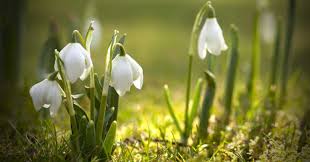Community Garden

February Update from the Community Garden
Spring in the air, drawing us out from winter hibernation and into the outdoors.
If you have managed to give your garden yearly coverings of compost, your soil should be completely workable in February, and hopefully giving you some beautiful signs of life and bounty. There is something magical about buds of any sort, and the winners for February have to be rhubarb and peonies, both pushing up with scarlet tips. Rhubarb takes the prize for pure brutish vigor – a Siberian native who shrugs off our increasingly impotent winters and bursts out of the ground with stems as thick as a toddler’s forearm. There will be plenty of rhubarb in Sarratt Stores – both in its raw form, and in jam and chutney. Did you know that forcing your rhubarb weakens the plant? For all its show of strength, rhubarb needs light as much as the next plant, so if you do decide to deprive it of light for those extra tender stems, be sure to give it a rest for a couple of years afterwards – it pays to have several crowns so you can rotate them, and remember to give them as much compost or well rotted muck as you can manage. Rhubarb really struggles in hot, dry conditions, which is another reason to give it a good deep mulch that will keep the water in the soil around its roots, and to plant it out of glaring sunlight if possible. There is a garden myth that you mustn’t put the leaves on the compost heap – while it is true that you mustn’t eat the leaves due to their high oxalic acid content, this is broken down in the decomposition process, and will not harm your compost in any way
For those who prefer beauty to bounty, you may have been enjoying the glorious snowdrops – such optimistic little flowers at a time when so much is still dormant. To increase your stock of snowdrops, or just to move them around, dig up a few clumps after they have finished flowering (dig deep, and pull gently, making sure the bulbs are attached to the stems!). You can then divide the large clump into several smaller ones which can be replanted at approximately the same depth elsewhere in your (or someone else’s) garden. Snowdrops, aconites, hellebores, crocuses – these are all a treat for the eye, and a great source of early pollen for the bees. Snowdrops and crocuses grow very happily under deciduous trees or in grass – if you do grow them in your lawn, just be sure that the leaves have died back before you know them off, otherwise the plant is being deprived of photosynthesising capacity just as it is building up reserves for next year.
February has been another quiet month in the SCG.Behind the scenes we have had help from Sunnyside Rural Trust, who brought a team along to build a base for the new shed. Predictably, I had bought the wrong materials (it turns out that concrete and cement are different things!!), so massive thanks go to Brian, who came to the rescue with materials and expertise. The new shed is now up, and it’s FANTASTIC! The second water tank is also in place and connected, thanks to Grainger and Jack who endured wet feet and cold hands. The SCG couldn’t thrive without the invisible help of so many people – it really is appreciated.
There are lots of salad leaves pushing up in the greenhouse, and more due to go into the polytunnel imminently– we hope to have them in enough quantity for them to be in the shop by mid March – look out for posts on Facebook or Instagram, or the board outside the shop to see exactly when they will arrive. In the meantime, it is the season for: British apples, beetroot, celeriac, cabbage, cauliflower, chicory, leeks, parsnips, carrots, kale, squash, mushrooms and onions amongst other things, most of which can be found in our cherished Sarratt Stores.
As ever, get in touch if you’d like to be involved. Email is best – floragarveygardening@icloud.com